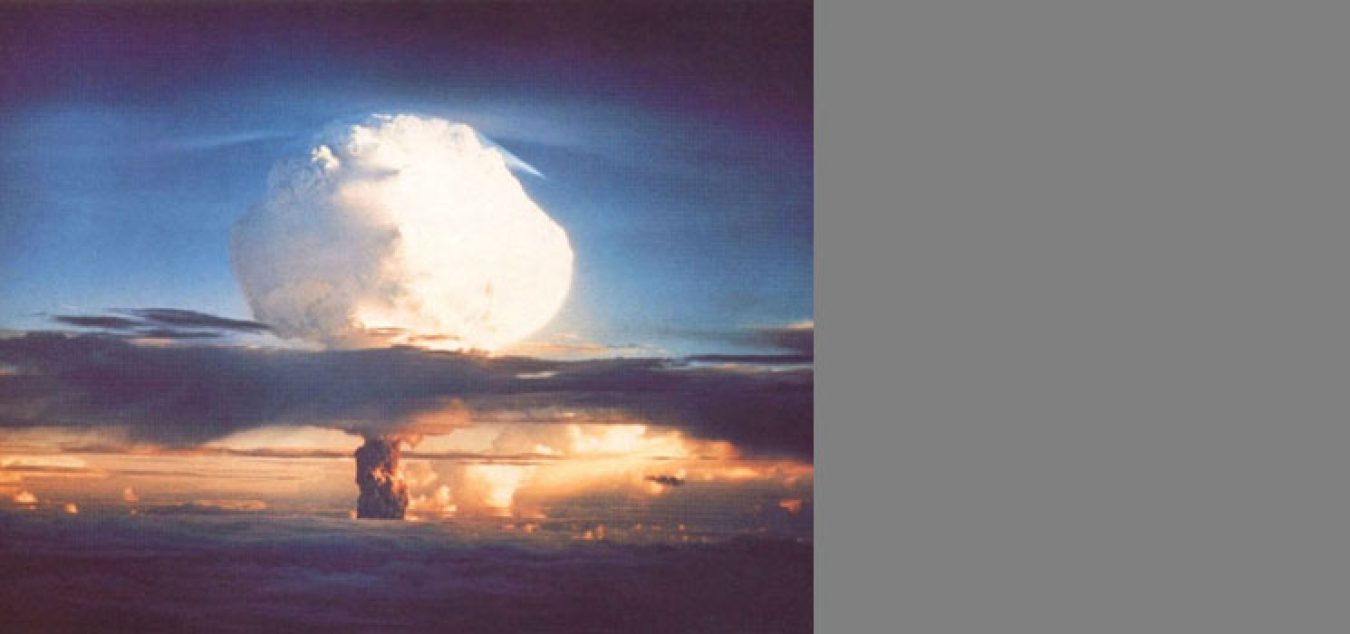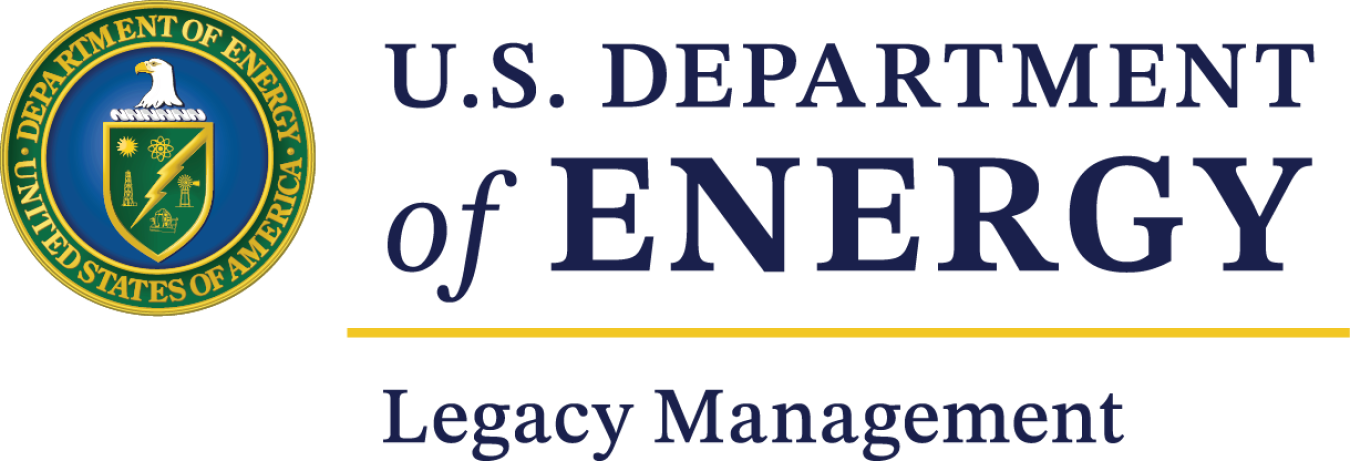
The U.S. Atomic Energy Commission detonates the first thermonuclear device, code-named "Mike," at Enewetak Atoll in the Pacific.
Return to Timeline of Events: 1939 to 1950
Continue to Timeline of Events: 1971 to 1980
December 20, 1951
The Experimental Breeder Reactor No. 1 located at the National Reactor Testing Station near Arco, Idaho, produces the first electric power from a nuclear reactor.
October 31, 1952
The U.S. Atomic Energy Commission (AEC) detonates the first thermonuclear device, code-named "Mike," at Enewetak Atoll in the Pacific. The device explodes with a yield of 10.4 megatons.
January 20, 1953
Dwight D. Eisenhower is inaugurated President.
December 8, 1953
President Eisenhower delivers the “Atoms for Peace” speech at the United Nations launching efforts to develop peaceful uses of nuclear energy both at home and abroad.
January 24, 1954
The Navy launches the first nuclear-powered submarine, U.S.S. Nautilus.
February 14, 1954
The Bevatron particle accelerator begins operation at the Radiation Laboratory at Berkeley, California.
August 30, 1954
President Eisenhower signs the Atomic Energy Act of 1954, opening the way for the development of a civilian nuclear power program.
August 8-20, 1955
More than 1,400 scientists from 73 nations attend the first United Nations-sponsored International Conference on the Peaceful Uses of Atomic Energy held in Geneva, Switzerland.
October 4, 1957
The Soviet Union successfully launches Sputnik I, the first artificial satellite. Marking the dawn of the Space Age, the event pushes the US government into action and leads to the formation of the National Aeronautics and Space Administration (NASA).
December 23, 1957
The Shippingport Atomic Power Station, the world's first full-scale nuclear power plant, becomes operational at Shippingport, Pennsylvania.
August 22, 1958
President Eisenhower announces a moratorium on nuclear weapons testing to begin on October 31.
September 14, 1960
The Organization of Petroleum Exporting Countries (OPEC) is created by Iran, Iraq, Kuwait, Saudi Arabia, and Venezuela.
January 20, 1961
John F. Kennedy is inaugurated President.
June 29, 1961
The first radioisotope thermoelectric generator for space applications, providing electrical power for spacecraft by direct conversion of the heat generated by the decay of plutonium-238 oxide to electrical energy, is launched on the Navy Transit 4A spacecraft.
August 13, 1961
East Germany begins construction of the Berlin Wall, which closes all land routes between East and West Berlin.
September 1, 1961
The Soviet Union breaks the three-year moratorium on nuclear weapons testing. In a period of 60 days, the Soviets conduct 50 atmospheric tests, with a total yield exceeding that of all previous test series, by all nations, combined.
September 15, 1961
The U.S. resumes nuclear weapons testing, with an underground test at the Nevada Test Site.
April 30, 1962
AEC awards a contract to Stanford University for the construction of the Stanford Linear Accelerator Center.
July 6, 1962
As part of the Plowshare program seeking to develop peaceful uses for nuclear explosives, AEC conducts the Sedan test at the Nevada Test Site.
October 1962
Reconnaissance reveals Soviet missiles in Cuba. The United States blockades Cuba for 13 days until the Soviet Union agrees to remove its missiles.
August 5, 1963
The United States, Great Britain, and the Soviet Union sign the Limited Test Ban Treaty prohibiting underwater, atmospheric, and outer space nuclear tests. Nuclear testing continues underground.
November 22, 1963
Lyndon B. Johnson becomes President.
December 12, 1963
The Jersey Central Power and Light Company announces the purchase of a 515-megawatt plant from General Electric to be built at Oyster Creek, New Jersey. It is the first nuclear power plant selected on purely economic grounds without government aid and in direct competition with a conventional facility.
April 3, 1965
The U.S. launches the first nuclear reactor in space (SNAP-10A). SNAP stands for Systems for Nuclear Auxiliary Power.
November 1965
AEC makes the Liquid Metal Fast Breeder Reactor its highest reactor development priority.
November 9, 1965
The first major power blackout covers the northeast United States.
June 6, 1967
The Six Day War in the Middle East closes the Suez Canal, giving rise to the widespread use of supertankers to transport crude oil.
November 21, 1967
President Lyndon Johnson signs a bill authorizing the National Accelerator Laboratory, later renamed the Fermi National Accelerator Laboratory, for a site at Weston, Illinois, thirty miles west of Chicago.
March 13, 1968
The Atlantic Richfield Company and Humble Oil and Refining Company announce the discovery of oil on the North Slope of Alaska at Prudhoe Bay.
July 1, 1968
The Nuclear Non-Proliferation Treaty prohibiting non-nuclear weapon states from possessing, manufacturing, or acquiring nuclear weapons or other nuclear explosive devices is opened for signature.
January 1, 1969
President Johnson signs the National Environmental Policy Act.
January 20, 1969
Richard M. Nixon is inaugurated President.
January 29, 1969
An oil platform six miles off the Santa Barbara, California, coast suffers a blowout, releasing 200,000 gallons of crude oil and creating an 800 square mile oil slick.
March 5, 1970
The United States, Great Britain, the Soviet Union, and forty-five other nations sign the Treaty for the Nonproliferation of Nuclear Weapons.
September 23, 1970
Electric power "brownouts" hit the northeast during heatwave.
Return to Timeline of Events: 1939 to 1950
Continue to Timeline of Events: 1971 to 1980


